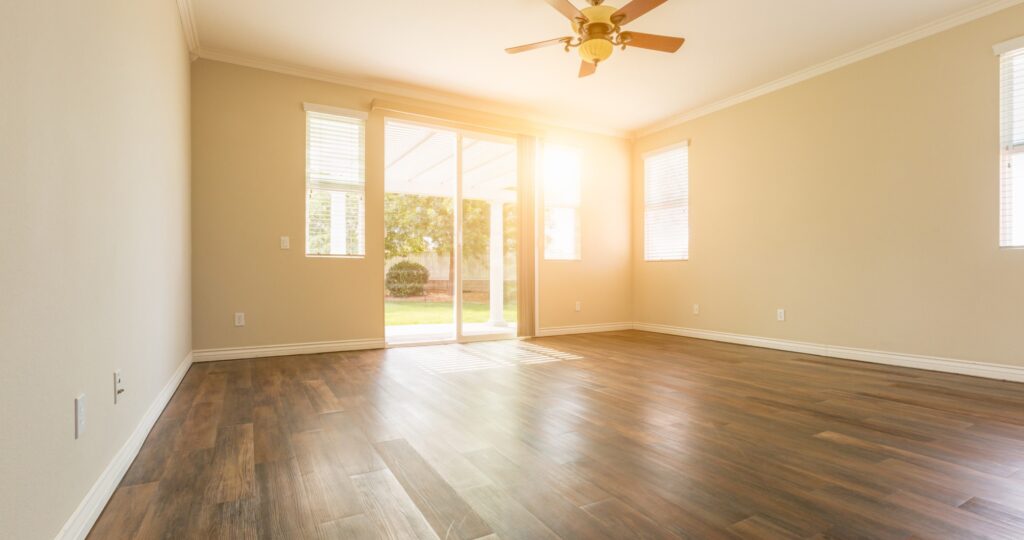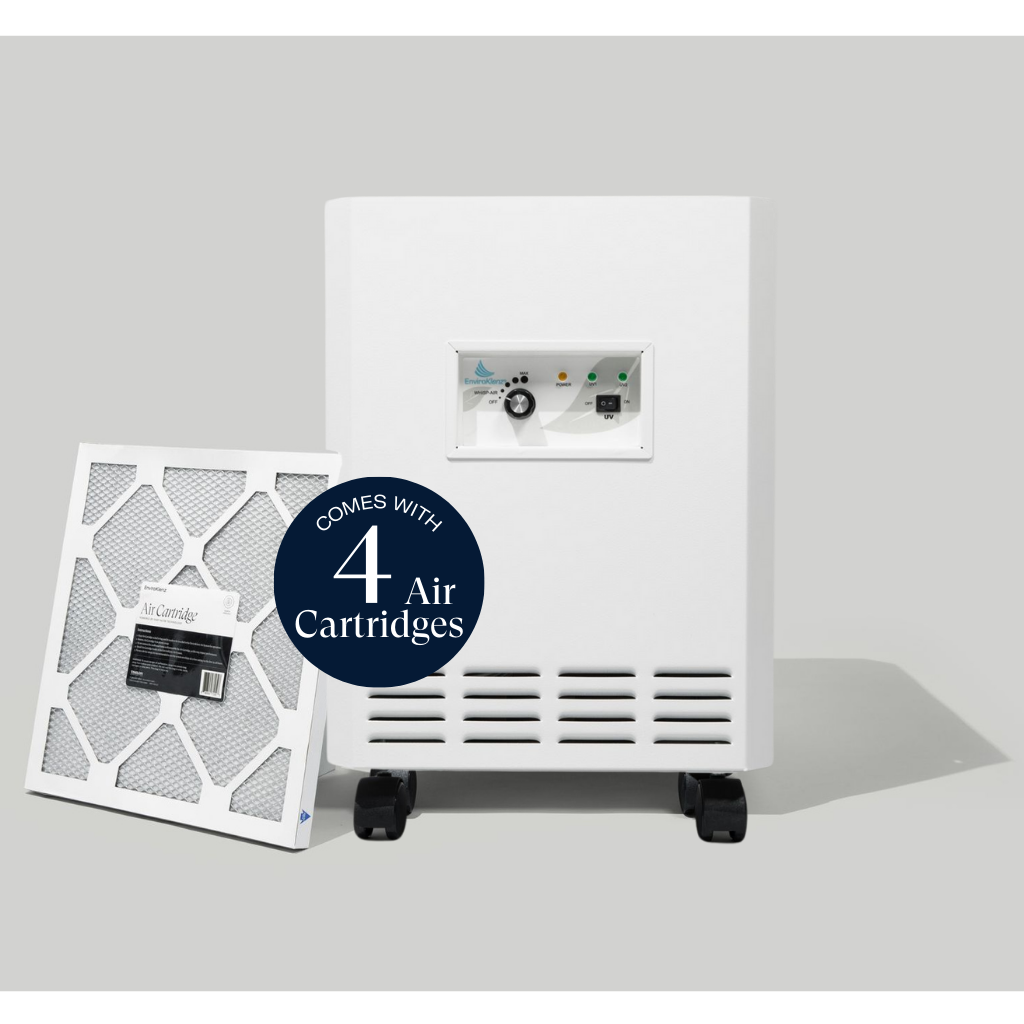The installation of new wood finishings in your home can be something exciting for many homeowners who thrive in the new updated look of their personal indoor environment. Whether that be the installation of new wood flooring throughout the main living areas, shiny new wood cabinets hung in the kitchen, or even the delivery of new wood furniture to bestow the living space of your home – new wood building materials can be found in abundance throughout many homes. However, the introduction of new wood building materials and items in your indoor environment will also allow for the scary entrance of a variety of chemical compounds to begin their reign of terror on your home’s indoor air space.
New wood building materials that are used in flooring, cabinets, and furniture are typically composed of an amalgam of chemical compounds that are used in the construction of the material. The different chemicals found in these wood items can include adhesives and glues that contain chemical VOCs (volatile organic compounds) that will be emitted into the indoor space of a home after installation. Additionally, there are other finishes that can be applied to the new wood after it is installed inside your indoor environments, such as polyurethane finishes that are used to coat the wood surface to protect it from scratches and water damage. This chemical finishing, however, is known for producing toxic chemical fumes into the air of an indoor air space, which can be both hazardous to the indoor air quality and to the health of those occupants residing in this environment.
In this article, we are going to learn more about the effects of polyurethane chemical finishing on wood and discuss the best methods to use to get rid of polyurethane fumes smell throughout the tainted air space of a home.
What does polyurethane do?
Polyurethane wood finish is a product used on wood building materials found throughout a home that is used to coat the surfaces of this wood, which helps to protect the material from scratches while also resisting water damage if exposed to water. In addition to the polyurethane’s ability to protect the wood from potential damage, it also has been used to provide wood items with a glossy, smooth finish that gives a more polished appearance in the home – which can be used on wood flooring, cabinets, and furniture. This wood-finishing product can be found in most hardware stores and is classified as both paint and/or a varnish finish – and is often labeled as a wood finish.
Polyurethane is generally applied directly to the wood surface with the use of a bristle brush that helps to reduce the appearance of streaks by giving the wood an even application of the polyurethane varnish. When you are applying the polyurethane coating to the wood materials it is recommended to avoid sunlight or direct heat during this application process. According to Do It Yourself, the ultraviolet (U.V.) rays from the sun and/or excessive heat will aid in the breaking down of the polyurethane, which will weaken the polyurethane’s ability to protect the wood – making it susceptible to scratching and water damage.
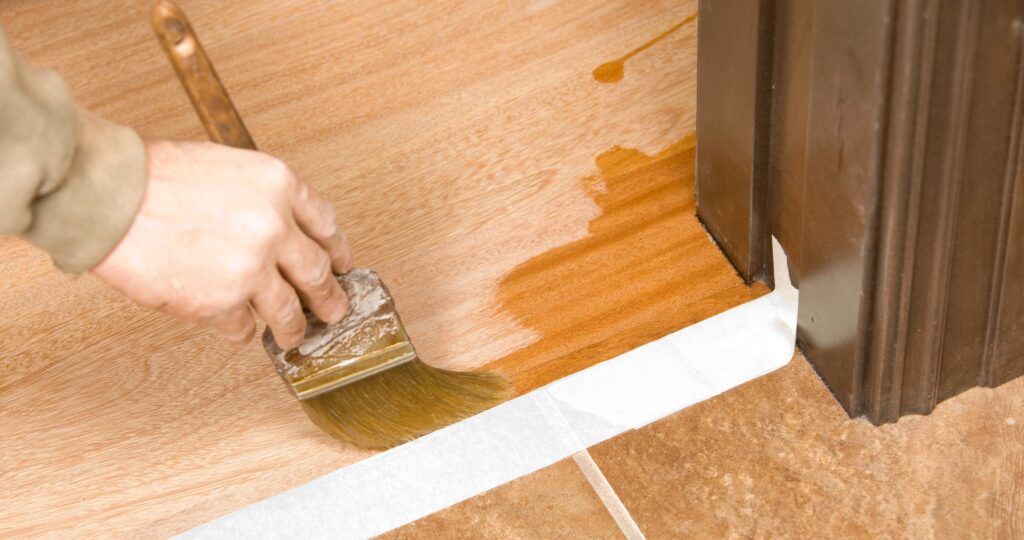
Polyurethane uses
The use and application of polyurethane can be quite broad, going further than the traditional method of using this chemical product just for a wood surface finish. Polyurethane can be surprisingly used in other items such as apparel, appliances, automobiles, building and construction, and even packaging. When polyurethane is used in each of these marketing sectors it is used in a specific manner that differs across each product and/or item. Thus, it is important to see how exactly polyurethane is used and understand the impact it has when applied in each of these particular products.
Below we are going to discuss more in-depth these different uses of polyurethane and why this chemical finishing product is used.
Polyurethane has been used in clothing apparel ever since it was discovered that the polyurethane could be made into fine threads by scientists. When polyurethane is used in conjunction with nylon fabric is provides a fabric that is more lightweight and stretchable. In addition to nylon, polyurethane has also been integrated into spandex fibers.
Did you know that polyurethane is used in most major appliances as rigid foams and thermal installation? Is polyurethane foam dangerous? This polyurethane foam helps these appliances by making them more cost-effective and aiding these appliances in acquiring a higher energy rating, which consumers look at during their buying process.
The comfort inside of your car may just be thanks to the use of polyurethane inside the vehicle. Polyurethane foam is used to make car seats comfortable, as well as even aid in the outside structure of the car by making bumpers, spoilers, doors, windows, etc.
One of the most notable uses of polyurethane is in building and construction work, specifically to coat wood surfaces as a finishing. In addition to its use on wood building materials, it is also used as a foam to conserve natural resources and energy consumption in a home.
What is polyurethane made of
The construction of polyurethane is fairly simple, according to the American Chemistry Council this chemical is formed by reacting a polyol with a diisocyanate or a polymeric isocyanate in the presence of suitable catalysts and additives. This physical construction of polyurethane makes is attractive for use as flexible foam, rigid foams, chemical-resistant coatings, and adhesives and sealants.
How long is polyurethane toxic?
If you are someone who has recently undergone the application of polyurethane on your wood floors, cabinets, or furniture, then you are aware of the odorous fumes that will infiltrate the airspace of your environment. The length of time that it takes for polyurethane to cure and dry in the environment is typically the same length of time that it is considered toxic in indoor air space. It has been estimated that depending on the type of polyurethane used, either water-based or oil-based, the length of time that the toxic fumes of polyurethane will linger in the air will range.
As we discussed previously, oil-based polyurethane has a longer dry and cure time than water-based polyurethane, which makes it more hazardous in the environment for a longer period of time. It is generally recommended to avoid walking on wood floors after polyurethane has been applied for at least 24 to 48 hours. In addition, you should also avoid moving back furniture for at least 4 days after the initial application. Overall, it is said that it takes a full 30 days for the floors to properly cure, which means this will likely be the duration of time that you deal with toxic fumes in the air space.
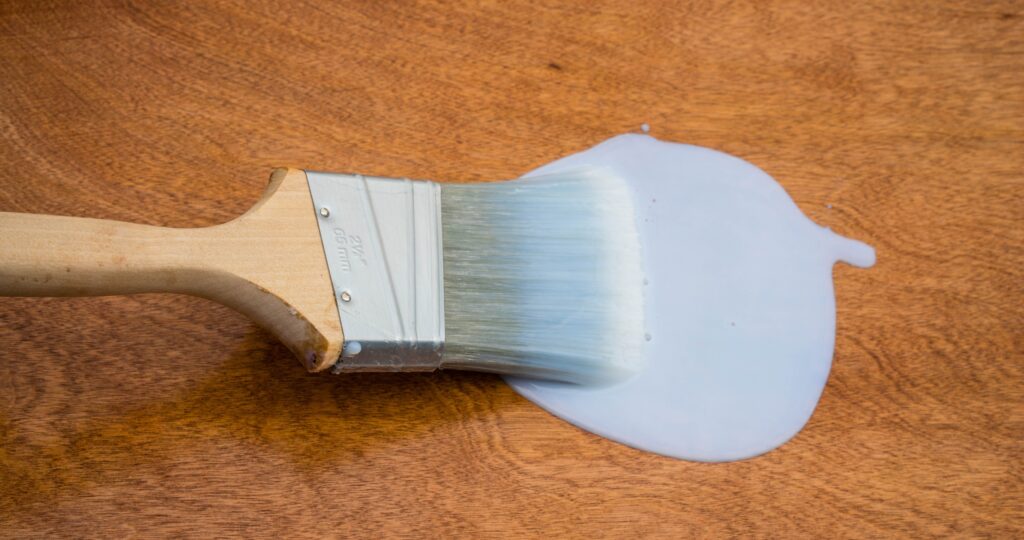
Polyurethane fumes safety
There are a range of safety precautions that should be taken before the use and application of polyurethane wood surface finishing – and these are safety information that should be known before you begin your application process. Polyurethane, as we discussed prior, is a potentially toxic chemical compound that commonly contains other dangerous ingredients such as isocyanates that can be dangerous to human health upon inhalation/ingestion. Isocyanates are sensitizing agents, and thus when polyurethane is applied or sprayed onto a surface it is critical that those doing the application process wear the proper PPE (personal protection equipment).
When it comes to the recommended PPE that is suggested for someone who is applying polyurethane wood surface finishing, the following PPE is;
- Eye protection
- Coveralls that cover the fully body, usually disposable
- Gloves such as nitrile, rubber, or neoprene
- Safety shoes
- And Respirator; be sure it is a tight-fitted fill face-piece air respirator mask
How long does it take for polyurethane to stop smelling?
After the installation of polyurethane and other building materials in your home, you will begin to wonder how long it takes for the polyurethane fume odors to stop smelling in your home. The initial curing time of the polyurethane after it has been applied to a large portion of your home’s floor can be up to 5 to 7 days. After this 5-7-day timeframe, most of the polyurethane should be dry on the surface, and able to be lived on once again. However, when it comes to the odors produced from the polyurethane finishing in a home this odor can last for months in some cases.
The polyurethane will off-gas for longer than the cure time, due to the chemicals being released from the wood finishing way after its initial application. This off-gassing process takes place because of the conditions present in the environment which make it ideal for the volatile chemicals to turn from a solid/liquid to a gaseous chemical compound in the air. Thus, you may find it necessary to begin integrating air quality control and mitigation methods in your home to help combat this growing polyurethane odorous fume problem.
How to measure polyurethane fumes
Monitoring polyurethane fumes is essential for maintaining a safe indoor environment, especially after recent applications. Here are a few methods to effectively measure and manage these fumes:
Use an Indoor Air Quality Monitor
Investing in a reliable indoor air quality monitor, like those included in the EnviroKlenz SMART Science™ ECO Kit, is one of the best ways to measure airborne VOC levels, including those from polyurethane. These devices provide real-time readings, allowing you to track the concentration of harmful particles and fumes in your space.
Check for Odors
While subjective, a noticeable smell of polyurethane indicates the presence of fumes. If the odor is strong, it may suggest high levels of VOCs, necessitating immediate ventilation and air purification measures.
Observe Symptoms
Pay attention to any physical symptoms experienced by you or others in the vicinity, such as headaches, dizziness, or respiratory discomfort. These signs can indicate elevated levels of harmful fumes and should prompt action to improve air quality.
Ventilation Testing
Test the effectiveness of your ventilation system by ensuring that windows and doors are open during and after application. Use fans to enhance airflow, which can help reduce the concentration of fumes and improve indoor air quality.
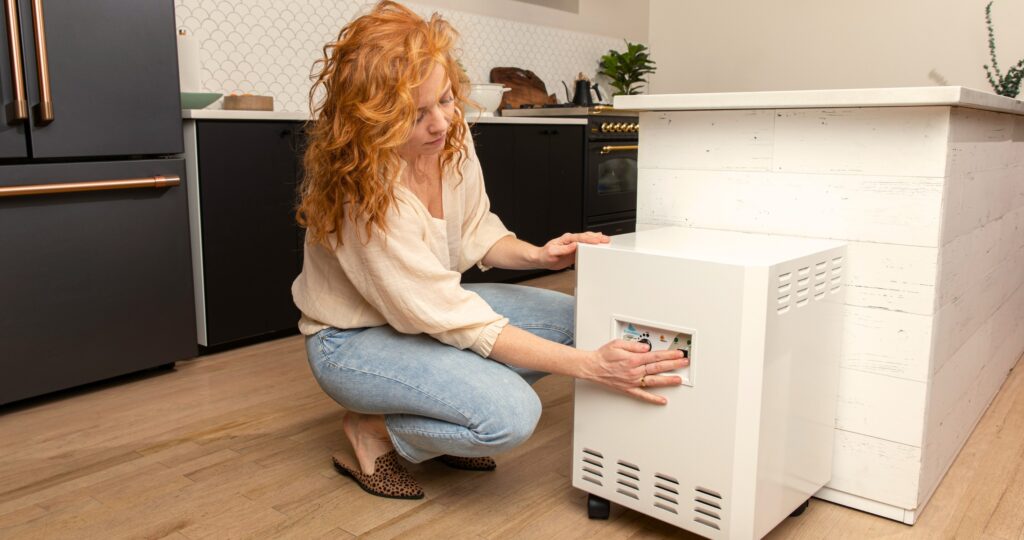
By actively measuring and monitoring polyurethane fumes, you can create a safer environment for you and your family. If high levels of VOCs are detected, take immediate action to ventilate and purify your space, and consider utilizing the EnviroKlenz Air System Plus for effective removal of airborne contaminants.
How to get rid of polyurethane smell?
When polyurethane is applied to the wood flooring, cabinets, and/or furniture in a home it can produce an unmistakable smell in the airspace that is full of an amalgam of chemicals. These polyurethane fumes can travel throughout the whole air space and remain hanging in the air for a significant portion of time, depending on the conditions in the environment such as poor ventilation, airflow, and temperature. When ventilation and airflow are restricted it will trap the polyurethane fumes in the air which will taint the indoor air quality and potentially impact human health. In addition, when the temperature in the room is elevated it will exacerbate the off-gassing of chemicals within these polyurethane wood finishings.
One of the best methods to use in a home how to get rid of the polyurethane smells and fumes from the air is through the use of an air purification device. There are a variety of different air purification devices that are currently available to consumers to select from and they can each contain a different type of technology for pollutant removal. From carbon, ozone, ionization, and HEPA filtration, each of these will work differently when trying to filter and remove chemical pollutants from the air. The EnviroKlenz Air Purifier, however, is unlike traditional air purification technologies as it works to completely capture, contain, and neutralize a broad spectrum of noxious and toxic chemicals and odors from the air (including polyurethane fumes) through the use of a proprietary earth mineral technology. This technology is used as the first-stage filtration in these air purifiers, along with the second-stage filtration of a HEPA filter for fine particulate removal larger than 0.3 microns in size at a 99.99% efficiency.
Article Sources:
- Do It Yourself: How Polyurethane Protects Wood (link)
- American Chemistry Council: Introduction to Polyurethanes: Polyurethane Applications (link)
- American Chemistry Council: Introduction to Polyurethanes: How Polyurethane is Made (link)
- Home Guides: Is Polyurethane Coating on Wood Floors Toxic? (link)
EnviroKlenz® Medical Disclaimer:
“Any information that is provided on this website is not for the use by any commercial or personal entity without expressed written consent of the blog author. The material and statements illustrated within this blog are not intended to diagnose, treat, cure, or prevent any diseases or medical conditions. Nor does the author in any way guarantee or validate the validity, totality, or efficacy of any claims and will therefore not be held responsible for the content of any claims. Always consult your medical physician for any specific medical advice or recommendations.”








